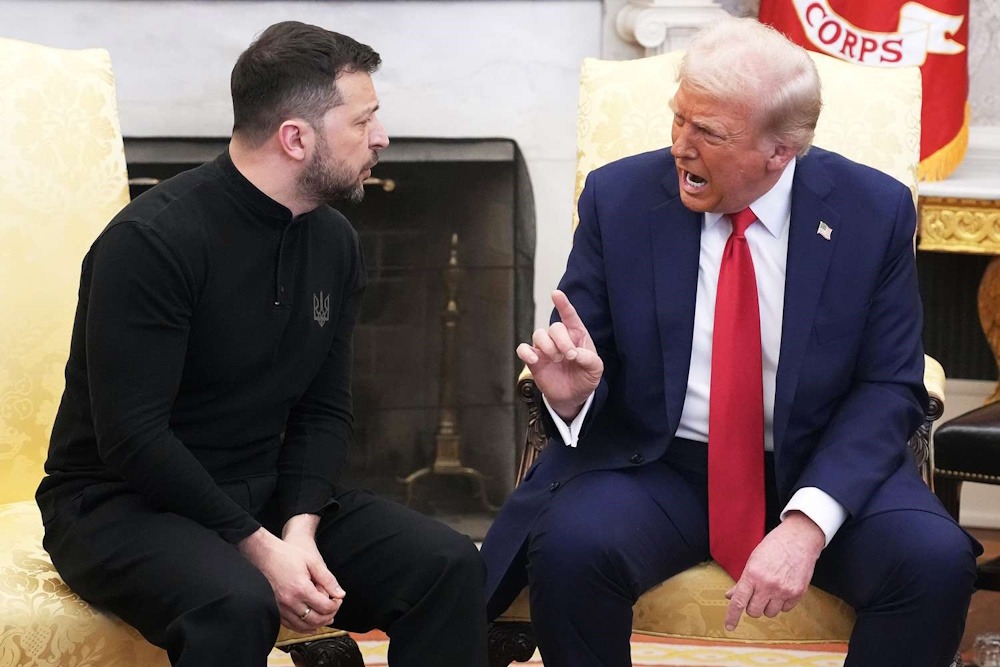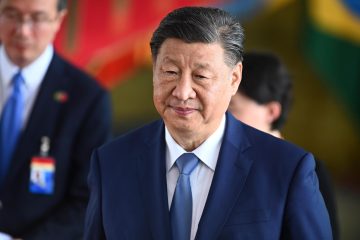U.S. pauses supply of arms to Ukraine

The Trump administration has ceased funding for new arms sales to Ukraine and is contemplating a freeze on weapons shipments from U.S. reserves, actions that jeopardize Kyiv’s capacity to sustain its defense at a pivotal moment in its conflict with Russian forces, according to current and former U.S. officials. Recent weeks have seen a suspension of financing, coinciding with the administration’s freeze on foreign aid. The decision to possibly halt the primary conduit for arms supplies to Ukraine follows closely on the heels of a contentious meeting between President Trump and Ukrainian President Volodymyr Zelensky at the White House. The tense exchange on Friday heightened concerns throughout Europe regarding a potential shift in the U.S. stance towards the broader Western alliance.
On Monday, Trump publicly criticized Zelensky for suggesting that the conflict with Russia is expected to persist for an extended period. “This statement from Zelenskyy is among the most detrimental that could have been issued, and it is unlikely that America will tolerate it for an extended period.” Trump posted on his social media platform Truth Social, employing an alternative spelling of the Ukrainian leader’s name. In late January, the Trump administration mandated a cessation of all foreign aid, encompassing military assistance, with the sole exceptions of Israel and Egypt, barring any waivers. On Friday, the administration announced the provision of nearly $3 billion in new weaponry to Israel, which includes over 35,000 new 2,000-pound bombs, citing an emergency provision under U.S. arms control regulations.
In recent weeks, Secretary of State Marco Rubio signed a waiver to exempt Ukraine from the foreign assistance ban imposed by Trump. However, senior State Department official Peter Marocco has yet to send the necessary letter to the Pentagon, which is required to facilitate the flow of aid to Kyiv, according to current officials. The decision to withhold the letter has effectively brought new weapons deals for Ukraine to a standstill, utilizing the U.S. Foreign Military Financing system overseen by the State Department, which funds arms for select nations, as reported by current and former U.S. officials acquainted with the matter.
Ukraine has access to U.S. weapons through various channels, notably Foreign Military Financing, which offers loans and grants for the procurement of arms from American defense firms. Additionally, the Ukraine Security Assistance Initiative enables the Pentagon to directly purchase weapons for Kyiv, although it currently faces funding constraints. Presidential drawdown authority, enabling the Defense Department to directly access its stockpiles, has emerged as the most pivotal mechanism for supplying arms to Ukraine.
On Monday, the White House will convene to deliberate the potential suspension of shipments under the drawdown authority, according to a congressional aide and another source familiar with the situation. The cessation of funding for new arms sales commenced prior to Friday’s contentious meeting, where Ukraine and the U.S. were expected to formalize a framework agreement concerning mineral rights. Instead, the ceremony and a planned press conference were both called off. The meeting to deliberate on the suspension of ongoing weapons shipments to Ukraine, sourced from U.S. military inventories, arose following the tumultuous events at the White House on Friday. The State Department refrained from providing any commentary.
According to current and former Western officials, Ukraine possesses a sufficient arsenal to sustain its military operations against Russia at the current tempo until mid-year, even in the absence of new U.S. military assistance. The outcome can be attributed, in part, to a significant increase in the approval of new weaponry by the Biden administration during its concluding days in office. During the weekend, European leaders convened in London and reached a consensus to establish a coalition aimed at developing a peace plan for Ukraine, which will be presented to Trump and is expected to incorporate ground troops and military assets.
European allies and Ukraine’s burgeoning defense sector may compensate for certain potential deficiencies; however, a cessation of U.S. assistance would significantly diminish Ukraine’s access to advanced weaponry, which is crucial for its overarching strategy to counter Russia’s extensive offensive against its territory. Should the U.S. shutdown continue, Ukraine risks losing access to a range of sophisticated weaponry, encompassing advanced air-defense systems, surface-to-surface ballistic missiles, navigation technologies, and long-range rocket artillery. The United States stands as the exclusive manufacturer of certain military systems, such as the Army Tactical Missile Systems (ATACMs) and the M142 High Mobility Artillery Rocket System (Himars), thereby enabling Ukrainian forces to target positions deep within Russian territory.
According to officials and analysts, the depletion of U.S. supplies would significantly impair Ukraine’s capacity for longer-range strikes and the defense of its rear positions. “Europe is poised to address a significant portion of Ukraine’s demand for artillery ammunition, particularly when considering the munitions previously supplied by the U.S. earlier this year,” stated Michael Kofman, a senior fellow at the Carnegie Endowment for International Peace, who regularly engages with Ukrainian front-line units. “The difficulties will become increasingly apparent as we approach summer.”
As time progresses, Ukraine may encounter increasing difficulties in formulating long-term strategies for its military capabilities or procuring components for its current systems. Ukraine is presently responsible for the construction or financing of approximately 55% of its military equipment. The United States accounts for approximately 20% of the supply, whereas Europe contributes 25%. The Pentagon has confirmed that the Trump administration has delivered a portion of the weaponry pledged by the Biden administration, which includes “hundreds of Guided Multiple Launch Rocket Systems (GMLRS), anti-tank weapons, and thousands of artillery rounds that Ukraine is utilizing on the battlefield as they become accessible from our reserves.”
The most recent significant arms package for Ukraine was announced on December 30, under the Biden administration, featuring advanced weaponry such as munitions for air-defense systems, Stinger missiles, and various other armaments. The valuation of the package stood at $1.22 billion. No further announcements regarding weapons transfers have been made since that time. According to a congressional aide, there exists more than $3 billion in funds derived from authorized stockpiles that Congress has approved, yet the administration has yet to allocate these resources.










